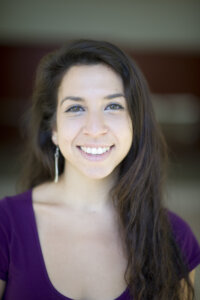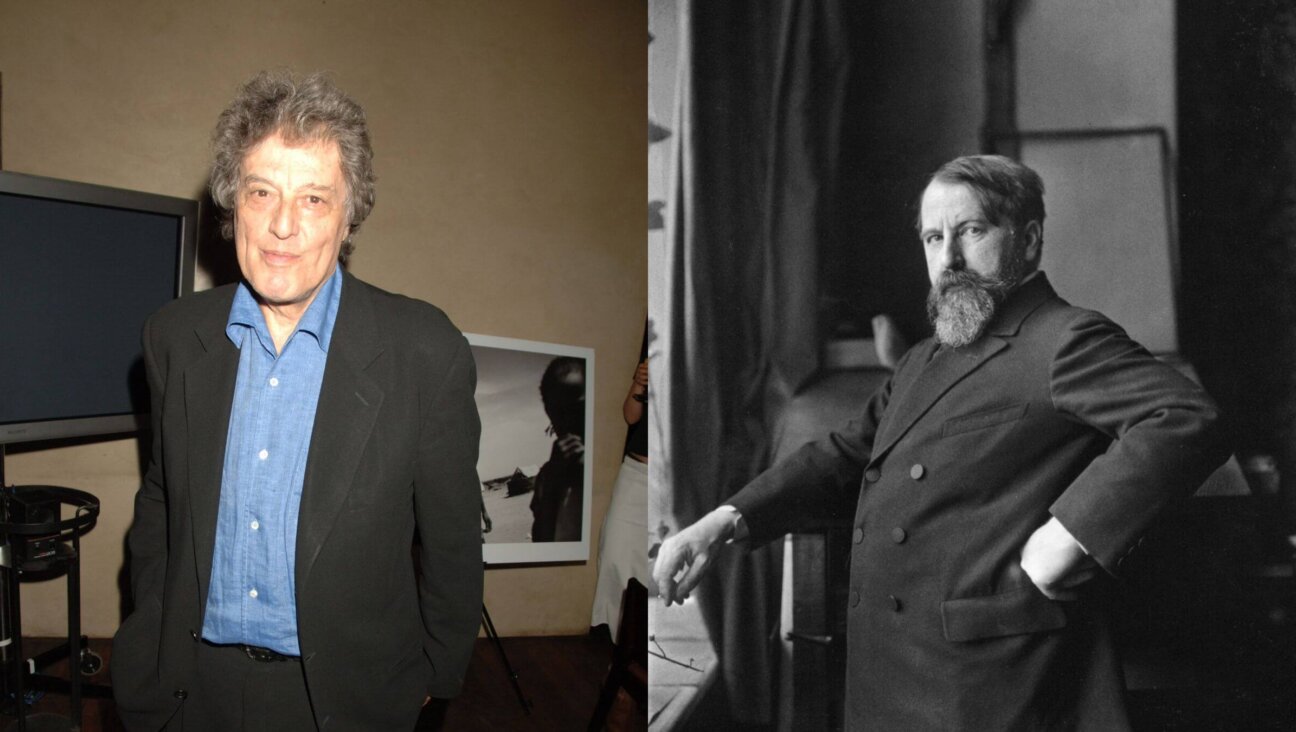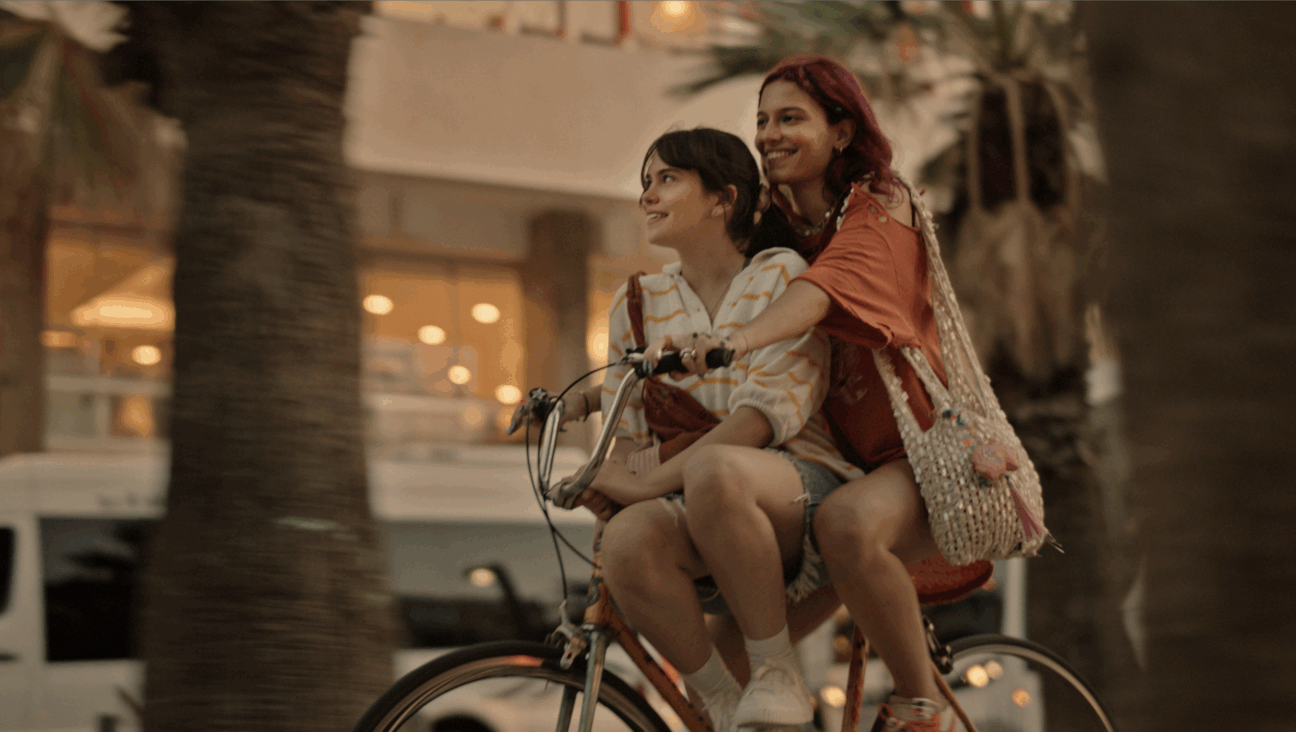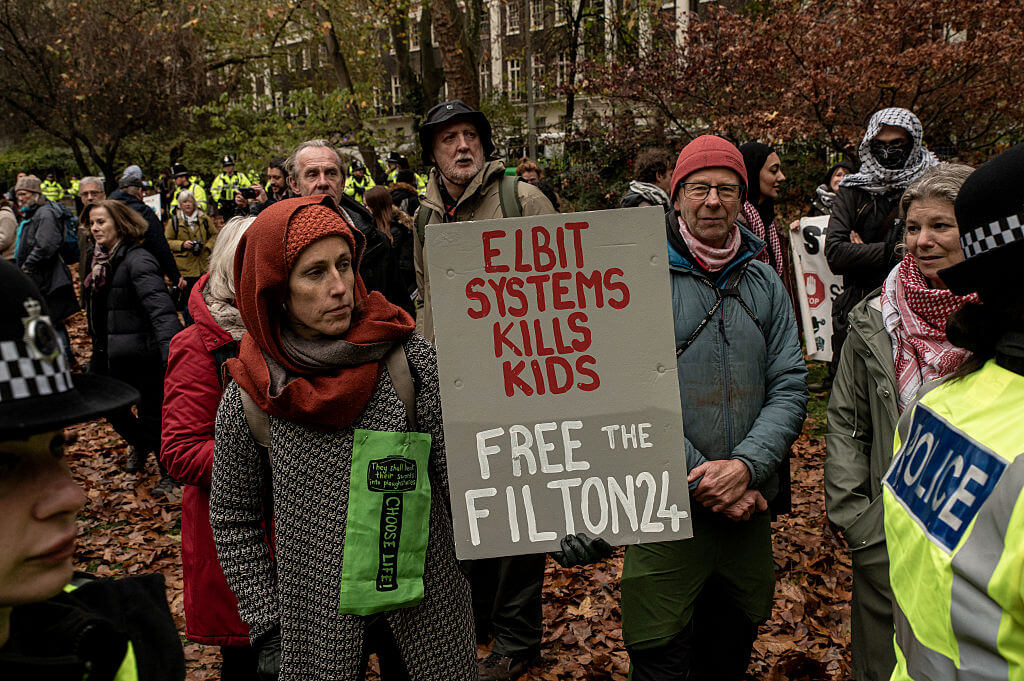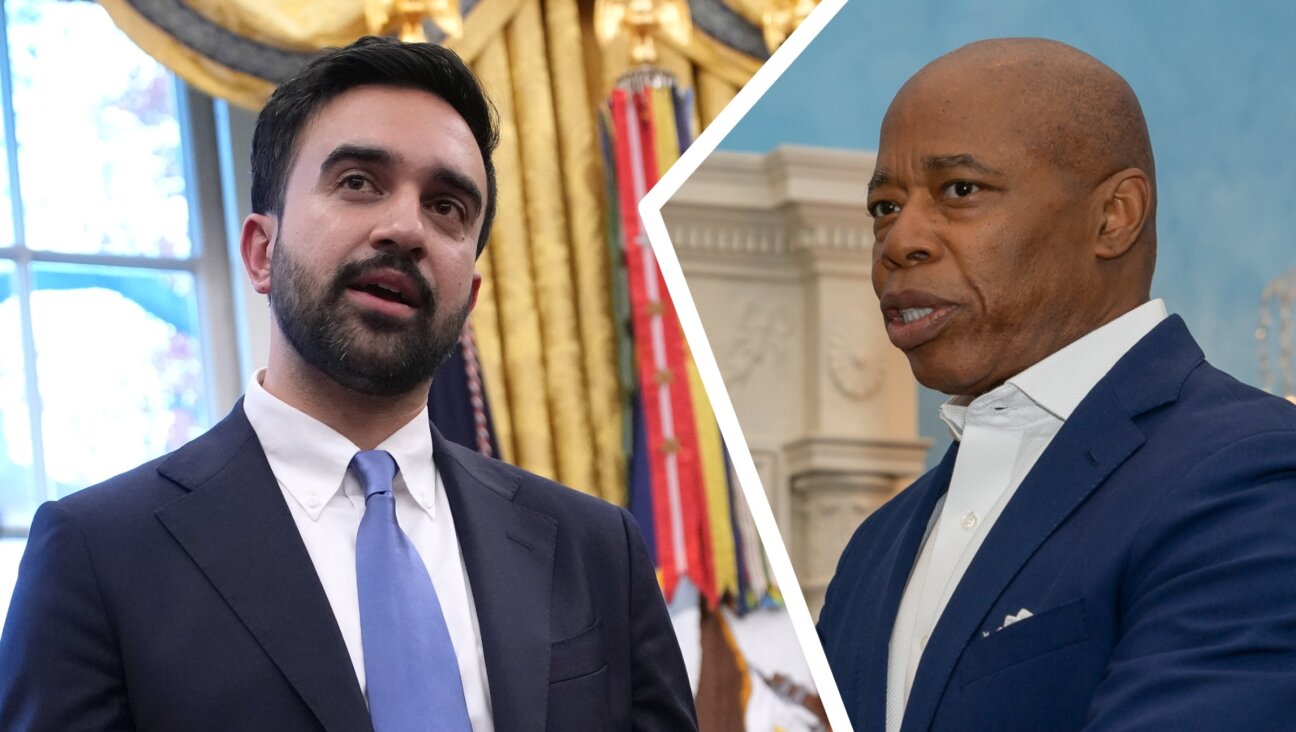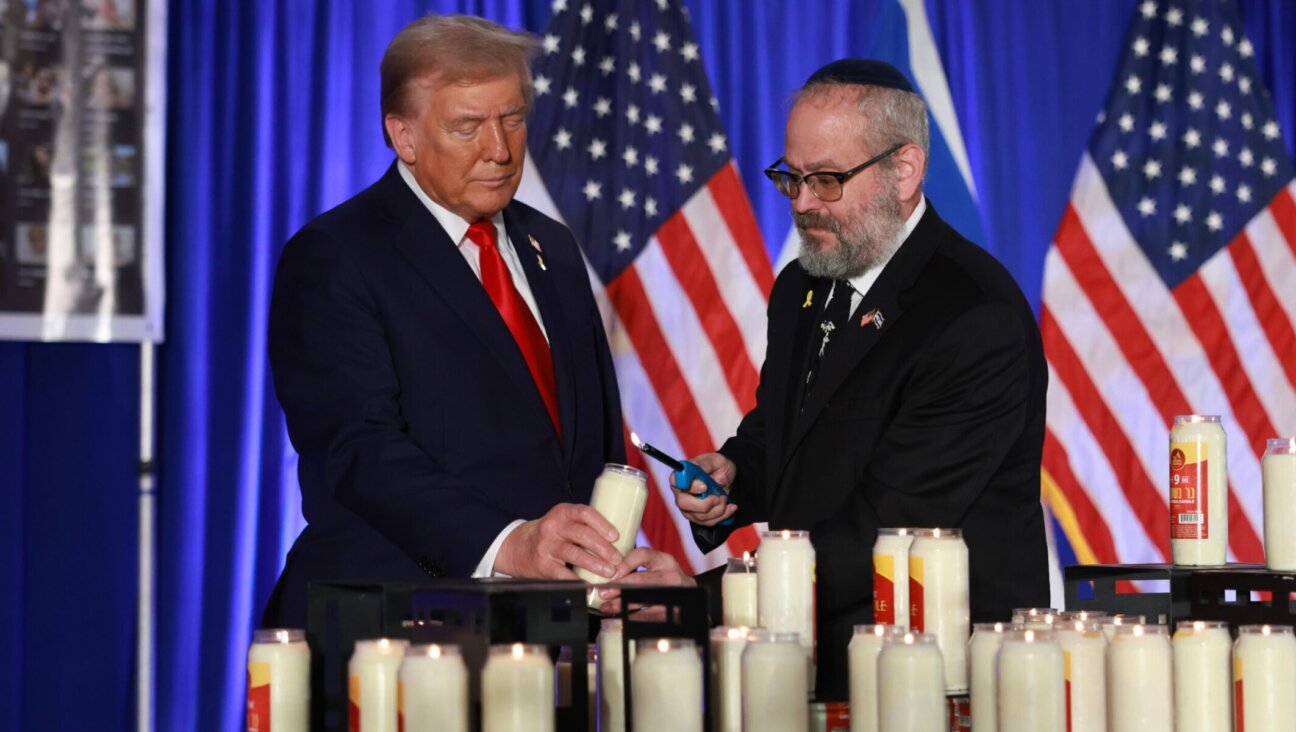Staging Holocaust Stories Proves Therapeutic for Witness Theater

Paying It Forward: Sarah Cohen, 17, helps to dramatize the stories of Holocaust survivors at a session of the Witness Theater program in Brooklyn. Image by Courtesy of Witness Theater
Sarah Cohen always looked forward to Wednesdays. Every week, from September through April, Cohen, 17, would wait for the end of her classes at the Yeshivah of Flatbush in Brooklyn. Just before 4 p.m., Cohen would head to the wood-paneled room just past the yeshiva’s lobby, which usually serves as its beit midrash, or study house.
There, she and 15 fellow seniors would meet with eight Holocaust survivors from Poland, Hungary, Ukraine and Austria.
When she was 14, Cohen visited the Yad Vashem museum in Israel, and she has been devouring books about survivors ever since. But what she really wanted was to hear the stories directly from those who lived them.
“I have a fear of how in a few years, there’s not going to be any Holocaust survivors,” she told me before a session one Wednesday in mid-February. “I feel like I have an obligation to hear their stories from their mouths to pass on to future generations.” So on Wednesday evenings she sat, holding a pen, recording furiously.
•
Witness Theater was imported to New York in 2012. Ezra Dagan — an actor, director and professor at the University of Haifa — and his wife Irit, an actor, stage director and drama teacher, had initiated the project in Israel. Together they conceived a months-long theatrical, therapeutic process to pass on firsthand testimony of the Holocaust.
The project has three phases: Participants get to know each other; survivors tell their stories; and then, the participants perform a dramatization of the survivors’ stories onstage.
Witness Theater allows a dwindling population of survivors to relate experiences to the next generation, who can continue telling their stories and preserving the memory of the Holocaust for decades to come.
The Dagans partnered with Maggie Gad at JDC-Eshel, the Association for the Planning and Development of services for the Aged in Israel. Gad works with local schools, government and other aid organizations to coordinate the program in dozens of locations across Israel; 64 projects have been completed to date.
Outside Israel, Gad has helped versions of Witness Theater spring up in Florida, and most recently in Cologne, Germany. New York is the most recent American city to join the growing list of projects.
Adeena Horowitz, administrative director of Nazi victim services at Selfhelp Community Services, says she was immediately gripped by the idea of bringing the theater to New York, where more than half of this country’s survivors live.
“This, to me, is the best way to teach about the Holocaust,” Horowitz said. She found a home for the project at the Yeshivah of Flatbush. Plans are in progress for additional projects in Manhattan and the Bronx during the next school year.
A native New Yorker in her early 30s, Sally Shatzkes is the Yeshivah of Flatbush’s drama therapist. She serves as the facilitator, writer and director at Witness Theater, and guides the project from beginning to end. For the first two months, she leads icebreaker activities and theater games to help participants get to know each other.
“There’s a lot of laughter and not really any talk of the Holocaust,” Shatzkes said. “It’s all geared towards creating a cohesive group.” Games like charades and collaborative storytelling help prepare the students and survivors for the testimony phase that follows.
Finally, the students and survivors rehearse and perform an original play derived from the stories that have been told during the sessions. The students portray the survivors onstage.
•
On a frigid night in early January, Shatzkes led the group in a warm-up.
“Who’s cold?” she asked. “Stand up and find a new seat.” As in a game of musical chairs, there was one seat too few in the circle. Whoever was left in the center would ask the next question: Who took a test today? Who has brown eyes?
A few weeks later, Shatzkes started the session with students and adults walking around, silently greeting each other with their eyes. In time, the exercise — which opened most sessions — became a running joke.
“Are we going to greet with our eyes?” a student asked playfully one day when Shatzkes gathered everyone for the warm-up.
“How else would we greet?” another joked back.
After the warm-up, one or two students met with each survivor to establish bookends and main events of stories. Each survivor in turn shared with the group, recounting over the course of the sessions a narrative from before, during and after the war.
Some participants remembered scenes in vivid detail: the moment they were separated from a parent, the day they smuggled weapons for the partisans, the potato peels that eased their hunger cramps in the ghetto, the first glimpse of smoke from a crematorium.

Generations: Sarah Cohen (right) and another student listen as Toby Levy shares her story. Image by Courtesy of Witness Theater
Toby Levy was 7 when the Nazis first marched down her town’s main streets in Chodorov, Poland (present-day Ukraine). Not long after, she went into hiding with her family in a Ukrainian woman’s barn. They slept four facing five atop a meager bed of hay every night for two years.
“What did you do…?” a hesitant voice inquired
“Everyone asks me that,” Levy answered, “all the children at the museum.” Now a widow living in Brooklyn’s Brighton Beach, she still works for the jewelry business her husband started and volunteers as a docent at the Museum of Jewish Heritage — A Living Memorial to the Holocaust.
Levy is a petite, sprightly woman of 80. When she explained where she and her family hid, she gestured to indicate how they moved aside loose tiles and slipped behind extra walls. Of the roughly 4,000 Jews in Levy’s hometown, she said, only 31 survived, all in hiding.
Shatzkes asked nine students to stand up in the center of the circle to demonstrate hiding in the barn.
“It was four on one side and five on the other side,” Levy said, traces of Eastern Europe inflecting her English. The students lowered themselves to the carpet.
“With a little bit of extra space above the head,” Levy said. Five students lay down facing one way, and four faced the opposite direction. Nine pairs of legs were packed tight in the middle.
“Did you ever shower?” one of the students asked.
“Are you kidding me?” Levy said gently. Someone else asked about the bathroom.
“We had two pails,” Levy said.
In the same way, the students re-created the scene in which Levy slept in a barn, they made other moments come alive.
Sometimes these were literal representations. Other times, the image was an idea or a metaphor. After Levy finished her chapter for the evening, Rena Nudel recounted her escape from the war with her siblings — from the ghetto in Lvov through Romania, Bulgaria, Turkey, Syria and Lebanon to get to Israel in 1945.
“I came to Israel and it’s January, but the sun is shining and you see from Carmel [in Haifa] the blue sea,” Nudel said, her eyes sparkling and her head tilted slightly up. “It was so beautiful, and I thought I was in paradise.”
Shatzkes asked the students to come into the center of the circle and “be the darkness and fear — not people in darkness and fear, but darkness and fear themselves.”
“Sarah [Cohen] is going to be Rena. Sarah is going to come through you however she can,” Shatzkes said, to create an image for “this journey from darkness and fear to paradise. Rena, watch Sarah.”
•
Sarah Cohen had been searching for a more personal way to learn about the Holocaust, and she says she found it with these sessions. “Every time they tell me a story, I picture it happening,” she said. “It’s such a different experience than hearing it from a video or reading a book about it.”
The students had all learned about the Holocaust before, but knowing the survivors made the experience different.
“They’re not only passing on the stories,” Shatzkes said, “they’re passing on the experience of knowing them.”
Still, there’s a limited window of time remaining for a project like this. UJA-Federation of New York’s 2011 Jewish Community Study of New York estimated 73,000 Holocaust survivors living in the New York area. Of the survivors counted in the survey — 90% of whom lived in New York City — an estimated 42,000 resided in Brooklyn.
However, the number of survivors old enough to remember their experiences and are healthy enough — both physically and mentally — to relate them coherently and attend sessions with students is diminishing rapidly.
•

Survival Story: Sol Goldberg, 88, spent two years in the Lodz ghetto before he was shipped to Auschwitz. Image by Courtesy of Witness Theater
When Cohen walked into the room one night at the end of January, her eyes and face lit up. She made her way around the circle, greeting the survivors and asking about their weeks.
“How are you?” she asked Levy. Cohen didn’t know it yet, but she would be playing Levy onstage in April. She lingered with a few other students around Levy, who was telling them how she would be going back to Israel after Witness Theater ended, so that she could volunteer for a few weeks with the Israel Defense Forces.
“I want pictures,” Cohen said. “You have to send me pictures!”
After that evening’s warm-up, Sol Goldberg, 88, leaned forward in his seat. A short man with a round face, Goldberg likes to joke around with the kids. More often than not, he would arrive with a whistle hanging on a neon-orange shoelace around his neck.
The faces in the circle turned to him. His leg was shaking. He had gotten stuck in previous weeks, struggling to talk about the gruesome events that he witnessed and experienced in the Lodz ghetto.
“It’s not easy,” Goldberg said. The laughter was gone from his eyes, magnified behind the large, slightly yellowed lenses of his glasses. “I’m doing this for you, students, so you know.”
After two years in the Lodz ghetto, he told the students, he was shipped to Auschwitz. There, a number was tattooed on his arm: B6578. He endured harsh labor and a death march west as the Russians approached from the east before he was liberated. Goldberg returned to his hometown in Poland in the winter of 1945 and waited for his mother, father and sister. But they never returned. He had survived alone.
“I feel guilty, for I survived,” said Goldberg, who learned English when he moved to the United States in his 20s.
“You’re not allowed to feel guilty,” Rena Nudel said from across the circle.
“No, someone had to tell,”Toby Levy said.
“God wanted you to have grandchildren,” Nudel added.
Shatzkes said later, “Sol [Goldberg] saw in his formative years the most traumatizing things a person can see, and he can’t get them out of his head…. It’s haunting. He sees things through Holocaust glasses.”
He tells his story because he needs the students to know, Shatzkes said, but that need is combined with “an understanding that they will never really know.”
•
Though the sessions at Witness Theater impact the students and help preserve stories, they also serve as a therapeutic process for the survivors.
After Goldberg struggled to finish his testimony that night late in January, the group temporarily dispersed for the usual midsession dinner. Editha Avishai — a heavyset survivor whose eyelids are usually painted a shiny green or bright blue — got up and gave Goldberg a kiss on the cheek. Her display of compassion signaled a transformation.

New Friendship: Editha Avishai was born in Hungary but managed to survive the camps. Image by Courtesy of Witness Theater
The youngest survivor in this year’s Witness Theater group, Avishai has a story quite different from Goldberg’s. She was born in a ghetto in Hungary in 1939. With her mother and five siblings, she managed to avoid the camps.
After the war, Avishai’s mother put her in children’s homes to ensure that she would have food to eat, first in Slovakia and then in Israel. She grew up away from her mother.
“I always felt like an orphan,” Avishai told me one evening, adding that she felt she never learned to show affection properly to her four children.
“I didn’t know how to be a mother,” she said. “I didn’t know how to do it.”
Horowitz described the woman who arrived for the first Witness Theater sessions as critical and rude. She interrupted stories and rolled her eyes, as if she wished the others would stop talking.
“She’s changed so much,” Horowitz whispered to a Selfhelp social worker, agape at Avishai’s display of empathy and affection. “I’m so moved.”
•
By the time the testimony phase was drawing to a close, Avishai sat at sessions with one arm draped over 17-year-old Joy Feinberg’s shoulder, watching and listening intently.
“I never knew I could feel so close to someone thrice my age. For us, age gaps don’t exist,” Feinberg’s last line in the script read.
But the bond Feinberg felt also made it more difficult for her to listen to Avishai’s stories. “I’ve heard Holocaust stories before, I think we all have, but this was such intense emotion because you really know these people,” Feinberg told me. She had felt upset and confused, and some of her classmates were also having trouble coping with the stories. Shatzkes and Horowitz held a meeting to sort through the emotions.
“Joy felt she was overwhelmed by being the object of love for Editha,” Shatzkes said. Because of the connections they’ve formed, she said, the students sometimes feel a sense of responsibility not only to carry on stories, but also to fill the shoes of those who were lost. It can put a lot of pressure on a teenager, Shatzkes said, “if someone says I love you like a daughter, a granddaughter.”
•
Shatzkes wrote the script so that each survivor’s story unfolded in a series of vignettes tied together by the survivor’s narration.
Shatzkes chose Cohen to play Young Toby. Victor Dweck — an energetic, hyper-involved 18-year-old with a distinct Brooklyn accent — played Young Sol.
Feinberg, however, did not play Young Editha. Despite — or perhaps because of — the strong connection the two had formed, Shatzkes decided to cast Feinberg as her mother.
“Originally I thought Joy would play Editha,” said Shatzkes, who ultimately decided the student needed some emotional distance. It would be good for the survivor, too, Shatzkes said, if a beloved student played the role of the mother, a figure Avishai had struggled with so much. “We’re hoping that Editha will come to see this woman in a new light.”
•

Performance To Remember: Rena Nudel (right) narrates her story with Sally Shatzkes. Image by Stav Ziv
On the eve of Yom HaShoah, students escorted survivors up to the stage. Liights dimmed, and the audience fell back in time — seeing the survivors’ stories — then came back to the present, observing the interactions and close relationships that had formed between generations.
“I don’t act,” Cohen had told Shatzkes in the fall. She had insisted she wasn’t a “stage person.” But eventually she came to understand that it wasn’t about acting.
“Now I am the book for others,” Cohen wrote in an application essay for college. She’s not sure yet how or when she’ll next pass on the stories she has collected, but she’ll hold on to them when she enrolls at New York University this fall.
“I am no longer fearful of the loss of a giant piece of Jewish history,” she wrote.
Cohen doesn’t head to the beit midrash each week anymore. But on Fridays she makes sure to call Levy and all the others. Sometimes she visits them. Recently, she even hosted a reunion dinner for students and survivors. She wasn’t the only one who had missed Wednesdays.
Stav Ziv studied history at Stanford University and received her graduate degree in journalism from Columbia Univesity.
